CHINOIS
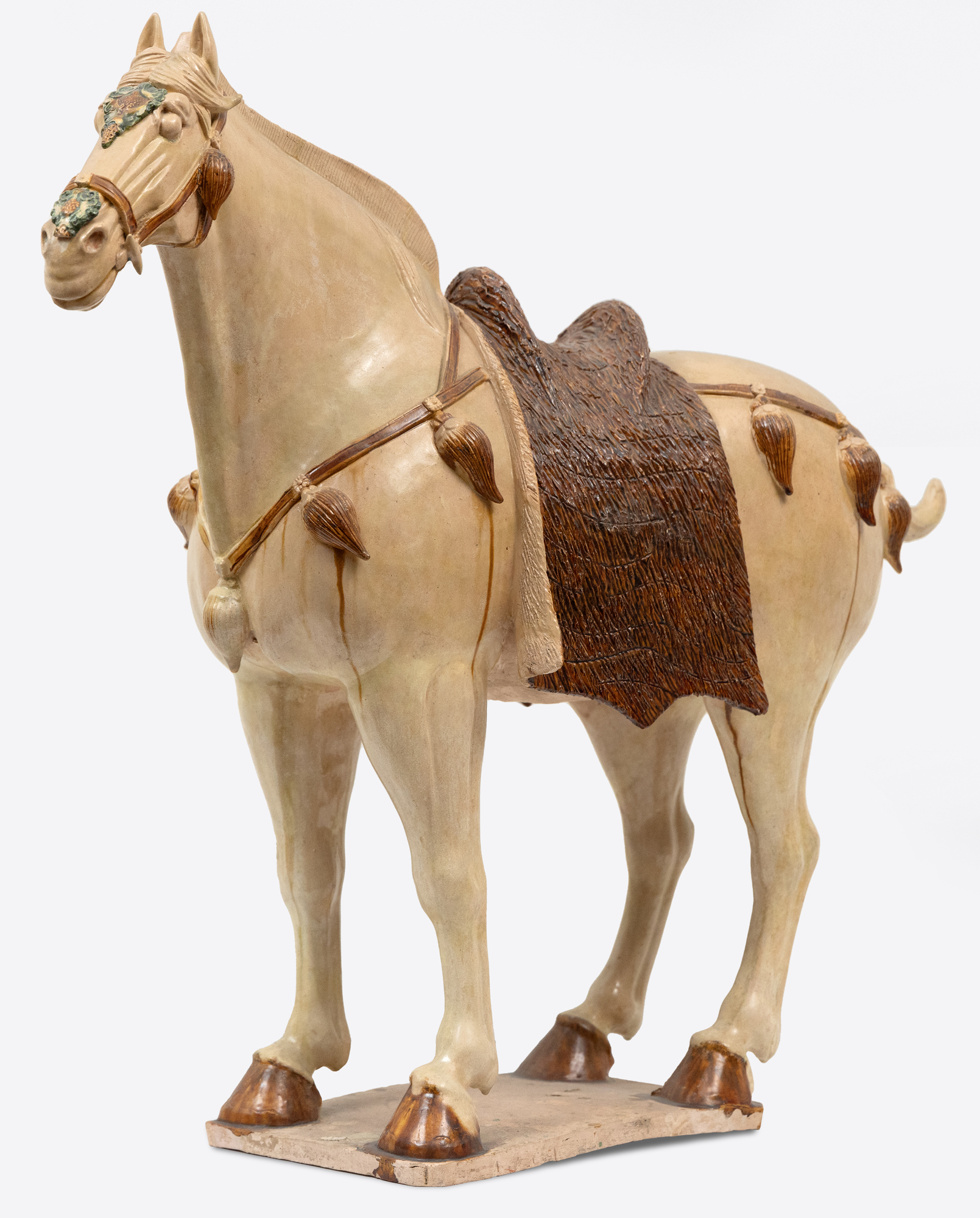
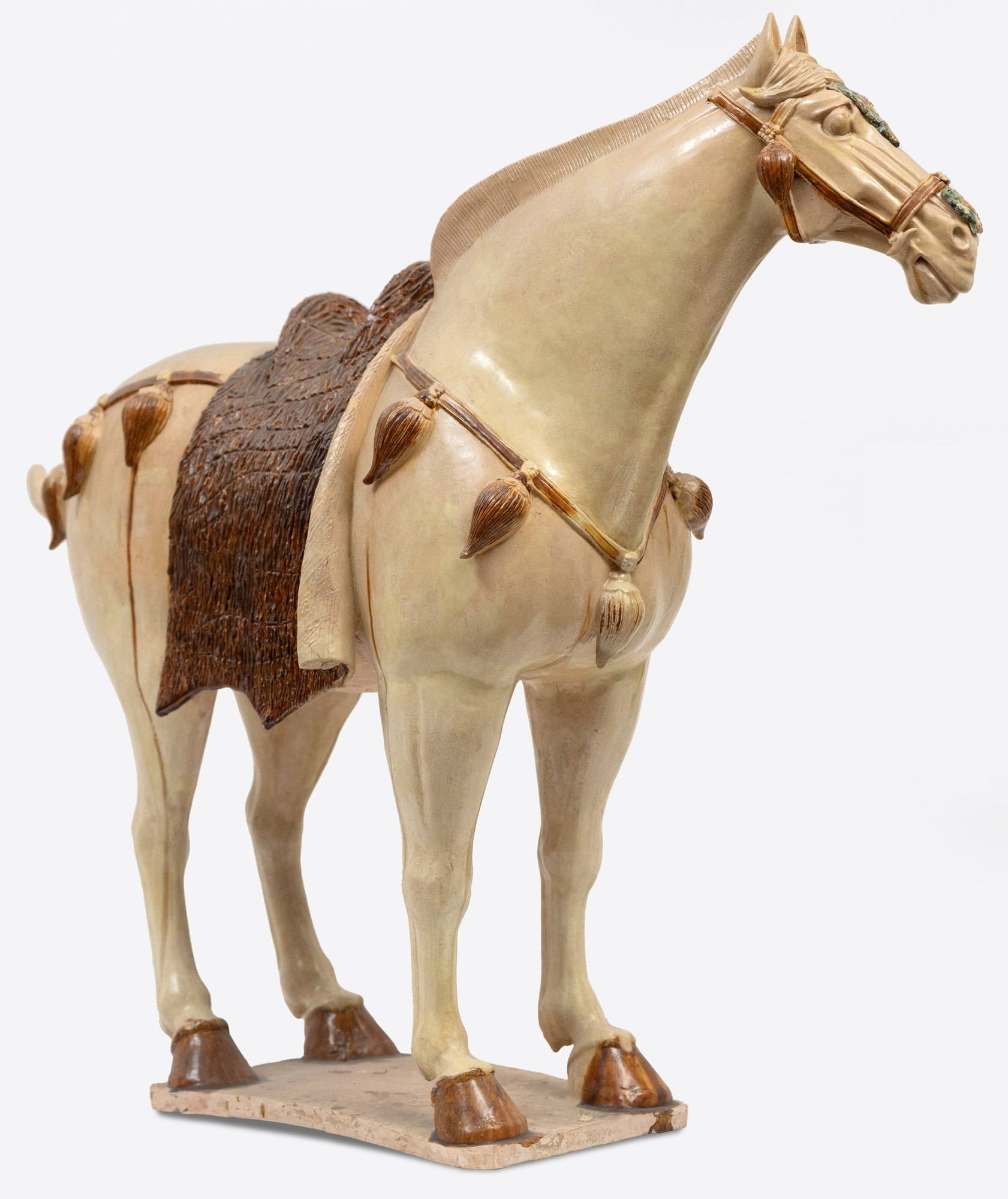
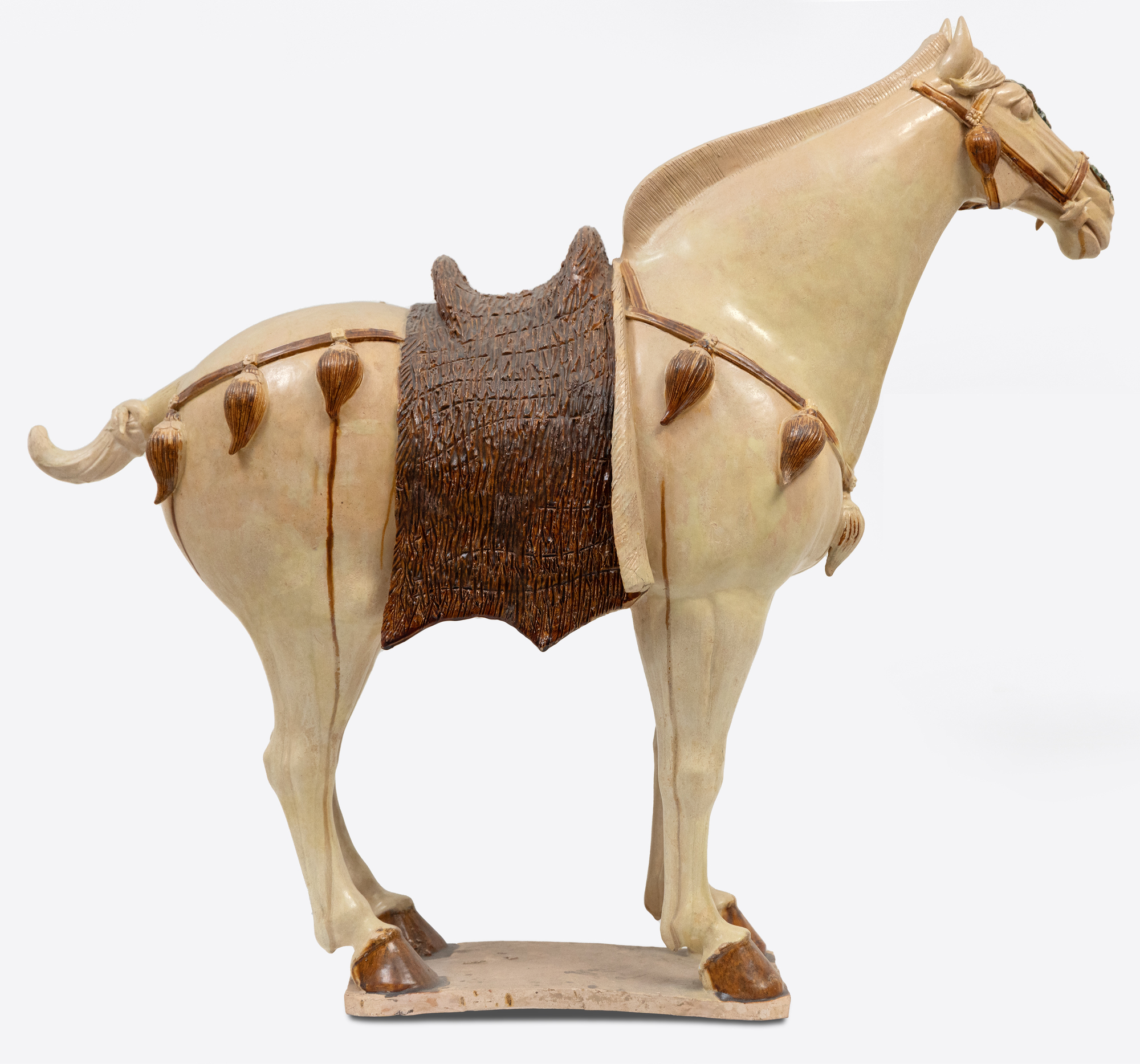
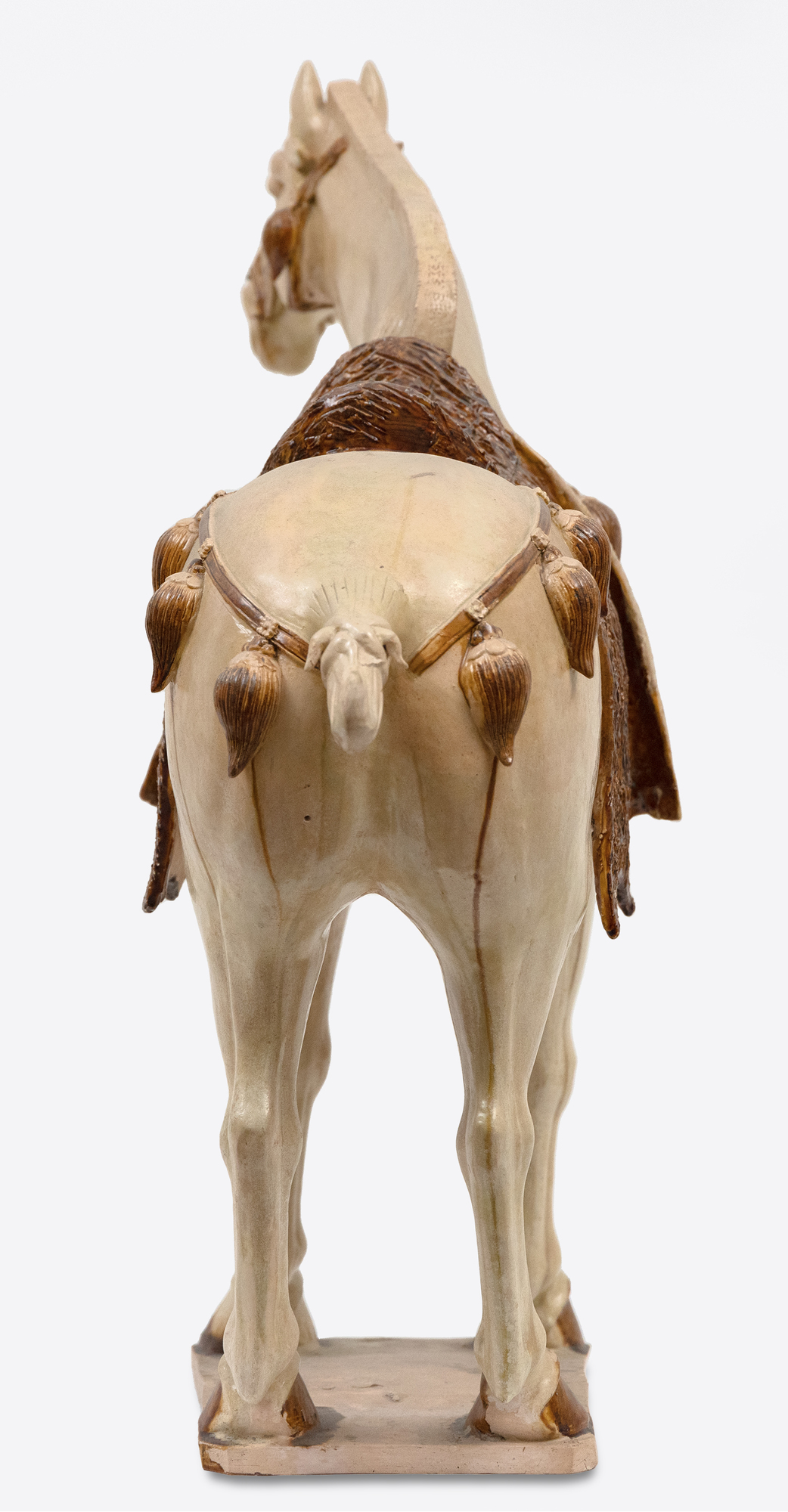
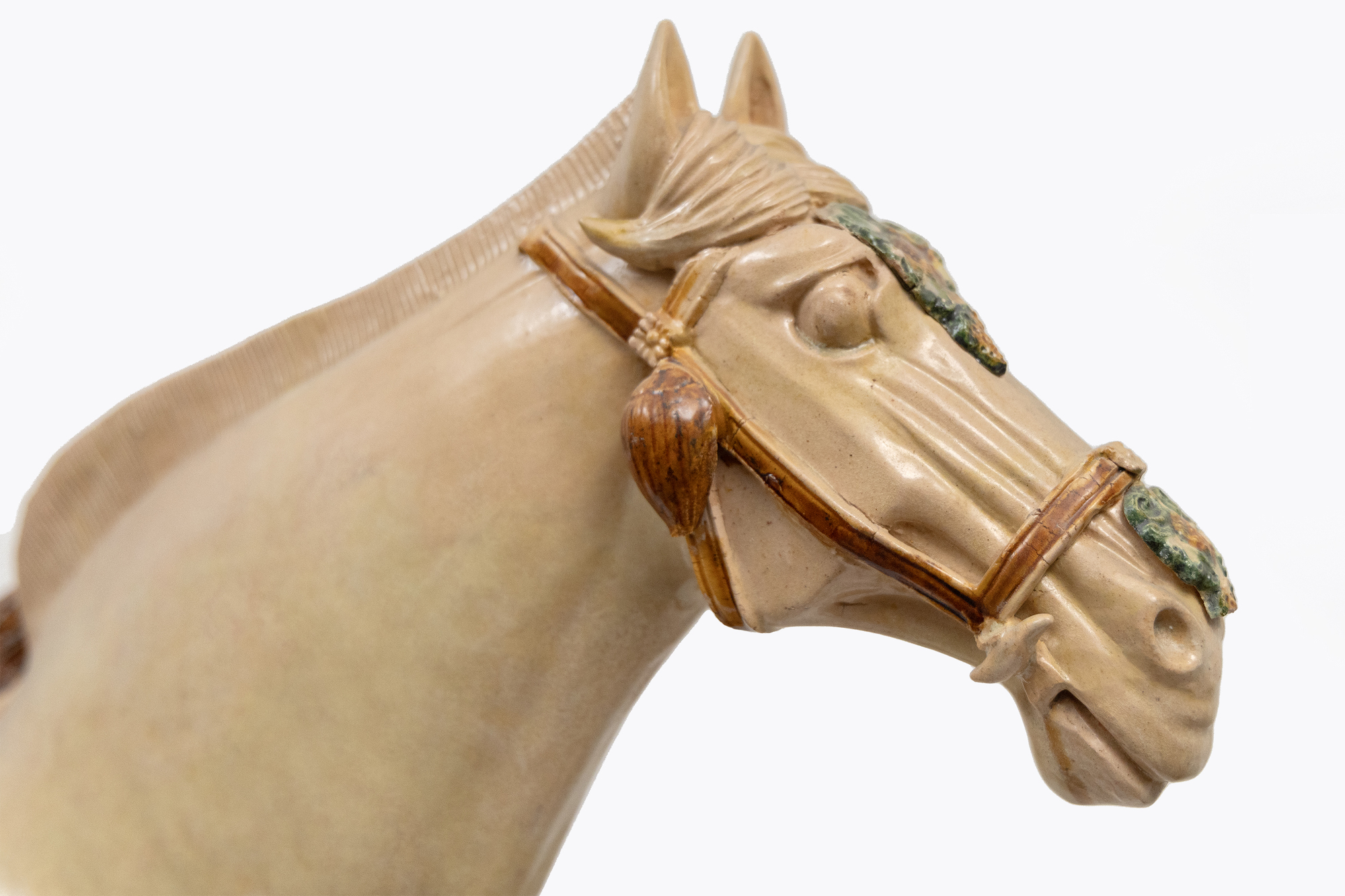
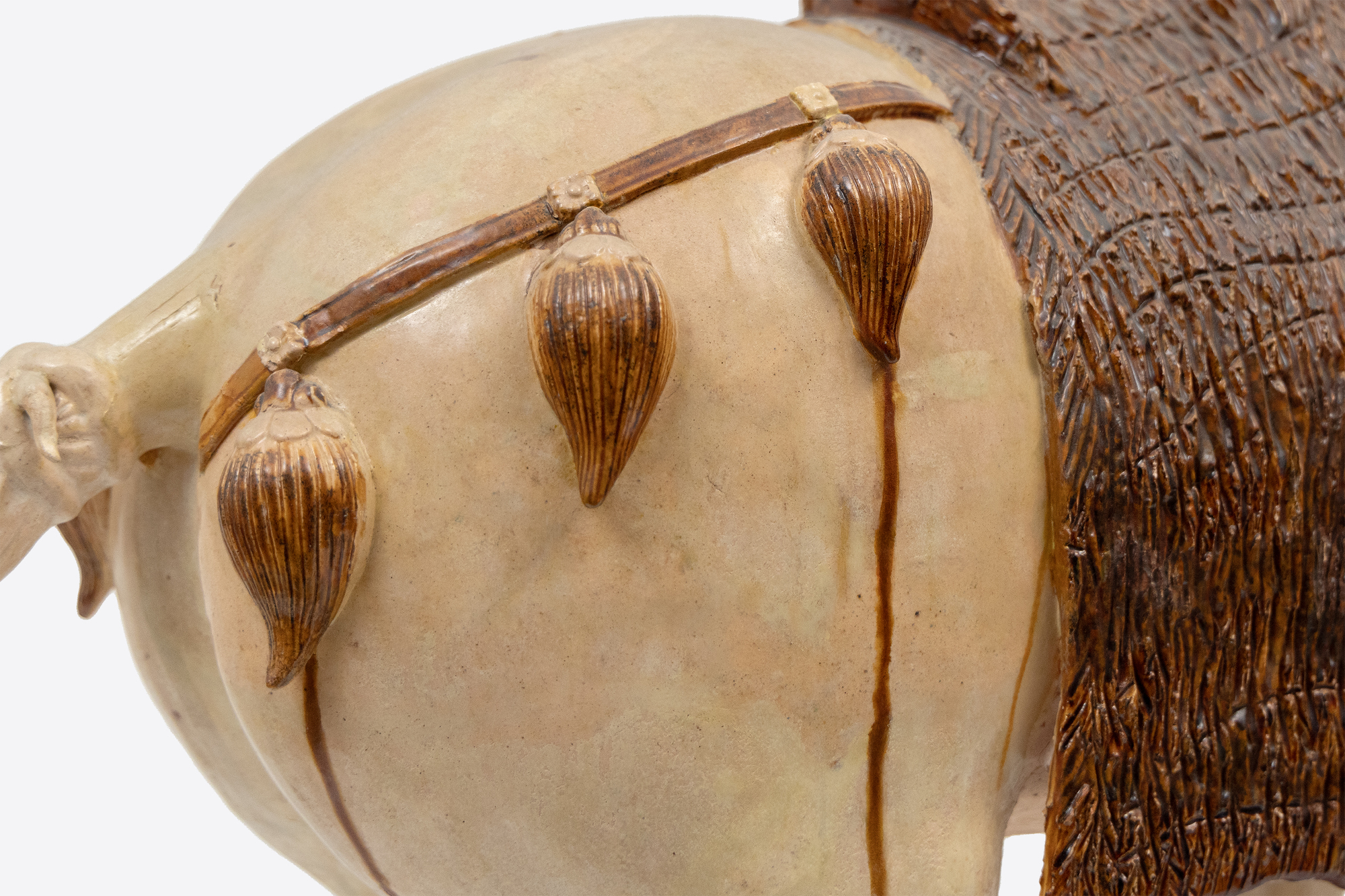
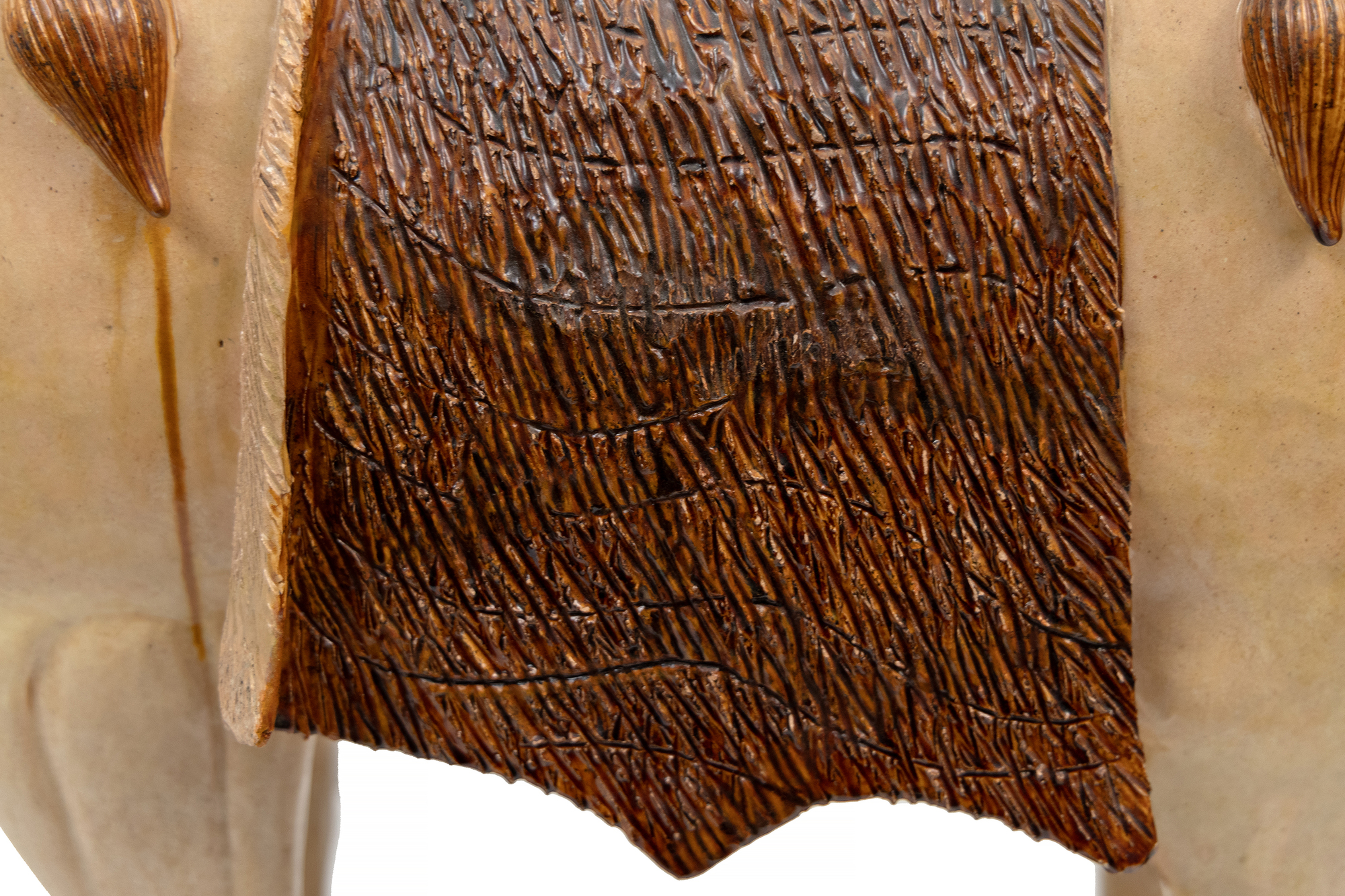



Provenance
Collection particulière, CaliforniePrix300,000
Conformément à des siècles de tradition, les rites funéraires sont restés très importants. Un département gouvernemental distinct était chargé de superviser la fabrication des articles funéraires. Officiellement, il y avait des limites au nombre de biens funéraires et des restrictions sur la taille des objets pouvant accompagner le défunt, en fonction du rang - les fonctionnaires les plus haut placés étaient censés avoir un maximum de 90 figurines, ne dépassant pas 30 cm de haut, tandis que les membres de la famille impériale étaient autorisés à en avoir plusieurs centaines jusqu'à un mètre de haut environ. Toutefois, ces règles étaient fréquemment enfreintes. Les proches du défunt croyaient pouvoir améliorer le statut de leur ancêtre dans l'au-delà en fournissant des mingqi en plus de la nécessité, assurant ainsi leur propre bonne fortune. Les céramiques figuratives de la dynastie Tang partagent des caractéristiques particulières. Les formes sont animées et vivantes, le sujet couvre tous les aspects de la vie sociale et rituelle et l'échelle des figures était raisonnablement petite, à l'exception de quelques magnifiques œuvres plus grandes commandées pour les tombes de l'élite. Les figures de courtisans et d'amuseurs, de joueurs de polo et de voyageurs exotiques qui arrivaient désormais régulièrement dans les villes chinoises avec leurs grands chameaux de bât sont devenues monnaie courante, illustrant la nature cosmopolite de l'époque. La variété des formes nous indique que les artisans avaient la possibilité d'innover individuellement et n'étaient pas contrôlés par des règles concernant des styles particuliers. Aujourd'hui, les objets funéraires ne parlent pas seulement de puissance et de force militaire, mais aussi de sophistication et de réalisations intellectuelles des défunts.


